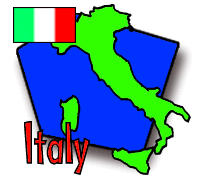Person of the Day: Christopher Columbus
Place of the Day: Riviera dei Fiori
Tech Fact of the Day: Alfred Nobel's Italian hideaway
Group Dispatch, May 29-30

Questions? Ask Ethan ![]() !
!
Return to Fast Facts
 |
 |
 |
 |
 |
|
Itinerary/ Journal |
Discussions |
About Italy |
eDscape Projects |
Scrapbook |
|
|
|
|
|
| Internet access in Italy was provided by ITNet. Internet access in the Trieste region of Italy and hosting for the Italian version of this site have been provided by Spin. |
Copyright 1997-99 BikeAbout. All rights reserved.
